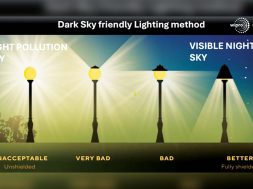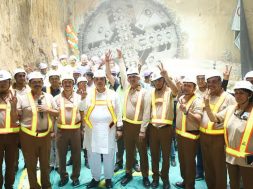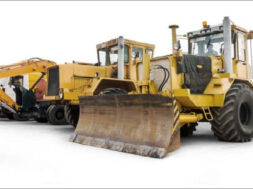SNC-Lavalin Infrastructure (Bangalore) was involved in design and construction of an arch bridge project in Bhutan incorporating several innovative features making it a landmark bridge. S Sengupta, Dy. CEO underlines the technology involved in building this bridge
The Royal Government of Bhutan had planned to construct a city road in the heart of capital city Thimpu called Hospital Link Road which would ease the traffic congestion on the main road by establishing a parallel corridor to the Secretariat complex. One of the major components of this road is the construction of a bridge across the Chubachu river running through the picturesque landscape of the capital city. The terrain is hilly and the stream has very high velocity of flow. After detailed site investigation and review of alternative schemes, an aesthetically pleasing open spandrel arch bridge with overall length of 48m has been conceived and detailed design prepared. The main ribs of the arch and verticals are constructed of Concrete Filled Tubes (CFT). The two-lane deck is of RCC construction, composite with steel grillage deck system. The bridge has been opened to vehicular traffic.
In this bridge project, innovative use of CFT technology has been used first time in South Asia as main structural elements. CFT technology has been used successfully in South America and Japan mainly in buildings. At present, extensive research is taken up in Japan to explore use of CFT in construction of Cable Stayed bridges.
Concrete Filled Tube (CFT)
A concrete filled tube is a composite structural element predominantly subjected to axial loading. The CFT system is being increasingly used in viaducts / bridges and building projects based on extensive amount of R & D work carried out. The system has the following advantages:
• High load carrying capacity
• High ductility
• No works for forms and rebars
• High fire resistance
• Better cost performance
• Delayed local buckling of steel tube
• Identical strength and stiffness in both X and U directions.
Extensive R&D in Japan on CFT system have shown that structural characteristics of the CFT and structural steel systems are almost identical, but the total steel consumption in the CFT system is lesser than that of the steel system leading to economy.
In the Link Bridge in Thimpu, effective use of CFT has been made in axial compressive elements predominantly the main arch ribs. The flexural elements in the deck grillage system are the conventional steel girder (braced frame) composite with concrete deck slab using shear connectors.
Description of the bridge finally selected
The overall length of the bridge is 48m c/c of bearings and the arch span is 32m.
Open spandrel arch with verticals is adopted. The arch ribs are of CFT with outer diameter of 508mm and thickness 12.7mm. Verticals are CFT’s with outer diameter of 273mm and thickness 12.7mm.
The in-fill concrete is of M25 grade and pumped inside the tubes during segmental erection.
The deck slab is composite with steel grillage through shear connectors.
The arch ribs and deck grillage both are provided with laterally stiff braced system. Ends of the deck girders are supported on neoprene bearings located on RC abutments. Both the arch and the abutments are on open foundations. Additional resistance to the thrust generated at the arch foundations is provided through parallel struts connecting both the foundations. CFTs have been used as the strut elements. The steel pipes conform to IS: 1161 – 1998 with minimum guaranteed yield strength of 240 MPa.
The arch rib has been pre-fabricated in segments in workshop and transported to site on hilly road. All steel components of the bridge have been fabricated in workshop through full-strength welding and site assembled with high strength friction grip (HSFG) bolts. The arch rib segments are erected by segmental cantilevering method supported by temporary steel tower erected on the arch foundation itself and stay cables systems of backstays and forestays.
Design Loadings
Superimposed DL
It comprises of following loadings:
• Wearing course on deck slab, 50mm bituminous concrete with 15mm mastic asphalt and 100mm additional thickness for future overlay.
• Footpath
• Service load viz. water mains, telephone and power lines
• Hand rails, standard Bhutanese type.
The various design loadings considered are as follows:
Live load
Carriageway: As per the standard design practice for road bridges in Bhutan, IRC class 40 T track / wheel loads are considered for global effect. For local effect, 26 T bogie loading and 16T axle loading are considered. The combinations of live loads are as per C1 207.4 of IRC: 6 – 2000. The positions of the wheels are chosen so as to produce maximum stresses in all cases.
Footway: 400 kg/m2 for global effect and 500 kg / m2 for local consideration as per Cl 209.1 of IRC: 6- 2000. The live load analysis has been carried out in computer by modelling the structure in 3D.
Wind load: Wind load calculation has been based on IS : 875, Part 3, 1987. The relationship used to calculate design wind pressure is given by: pz = 0.6 Vz2 where pz = design wind pressure and
Vz = density wind velocity.
The design wind velocity at site is 47 m/s and the factors for probability, terrain and topography are taken as 1.00, 0.98 & 1.00 respectively. Force coefficients are worked out for windward and leeward members with appropriate factors for effective solidity ratio and frame spacing ratio.
Seismic forces: This has been based on guidelines of IS: 1983 – 2002 (part I) and the design criteria adopted for recent major bridge projects in the area. The site is considered in Zone V of the IS code for which the horizontal seismic co-efficient is 0.08. The superstructure is designed to cater for a force of 0.12g of the weight of each member acting at its centre of gravity in any horizontal direction. Dynamic seismic analysis has also been carried out to check the response of the structure to given seismic spectra.
Settlement of foundations: The subsoil data indicates no appreciable variation in the substrata on both banks of the stream viz. weathered cobbles and gravels of gneiss and mica schist. However for design purpose, settlement analysis has been carried out for all the four foundations with reference to IS: 8009 – 1980. Modulus of sub-grade reaction values are worked out based on the respective SPT values obtained from subsoil investigation. The extent of absolute settlement at individual foundations varies from about 15mm to 21mm with net differential settlement of 6mm between any two foundations. However, the entire structure (space frame) has been checked for maximum possible differential settlement of 15mm between any two foundations i.e. total six possible sub combinations. For the longitudinal main analysis, the worst combinations of settlements in these foundations are taken as permanent loads.
Temperature effects: The superstructure of the bridge is designed for the following temperature effects:
• Maximum global variation of ± 25oC, and
• Local variation of ± 17oC with temperature gradient profile across the girder depth as per IRC: 6 – 2000.
Construction Stage Analysis
The stresses in the bridge superstructure have been checked at every stage of erection. The overall construction sequence follows that the abutments, thrust blocks and the two temporary towers are erected first. These are followed by segmental erection of the arch ribs supported by temporary stay cables on the river side of the tower and backstays on the rear.
Typical sequence of construction:
• Assemble segment 1 by site bolting / welding as per detailed drawings
• Erect segment 1 (braced frame) with 2 numbers backstays and stay S1
• In-fill concrete in arch tube through windows cut in the tubes and subsequently re-welded
• Monitor and adjust forces in stays and reduced levels at given points as per detailed drawings for the particular stage
• Start stage 2 work.
Bending of seamless 508mm steel tubes
Bending of the main arch rib of 508mm diameter steel tube to the parabolic profile posed a serious problem to the capacity of the local contractor in Bhutan. The project consultant explored the steel fabrication capabilities in India and found that this can be achieved by both hot and cold fabrication process. After extensive study of the Indian fabrication industry, the consultant finally adopted an ingenuous method of cold bending of the large diameter pipes by a hydraulic system through state-of-the-art imported machines available with a leading fabricator in India at their Gujarat site. The machinery has full set of automatic controls for cold bending of large diameter steel pipes of a given profile. The machine is operated hydraulically and cold bending is achieved in a short time. These machines have been used to bend up to 600 mm diameter pipes for oil/gas pipelines in India. After the cold bending, the profiled pipe segments were transported on road from the western city of Surat (Gujarat) in India to Thimpu site over a distance of about 2,000 kms and site assembled by HSFG bolts.
Conclusion
Concrete filled tube (CFT) system is emerging as a structurally efficient, economic and aesthetic system for large scale use in bridges, viaducts and buildings. It provides a highly efficient structural system in axial compressive elements. Energy dissipation capacity of a CFT frame is equivalent to that of a steel frame and therefore useful in seismic zones.
The innovative concept adopted provided an efficient and economic solution to the developing country of Bhutan. The concept ensured induction of appropriate know-how with technology transfer to the local engineers during design and construction stage. The sleek arch resulted in an environment friendly aesthetic structure blending with the mountainous terrain and gorge and avoided construction of another typical concrete girder bridge which has been generally the type of solution adopted so far in that country.
Cookie Consent
We use cookies to personalize your experience. By continuing to visit this website you agree to our Terms & Conditions, Privacy Policy and Cookie Policy.









